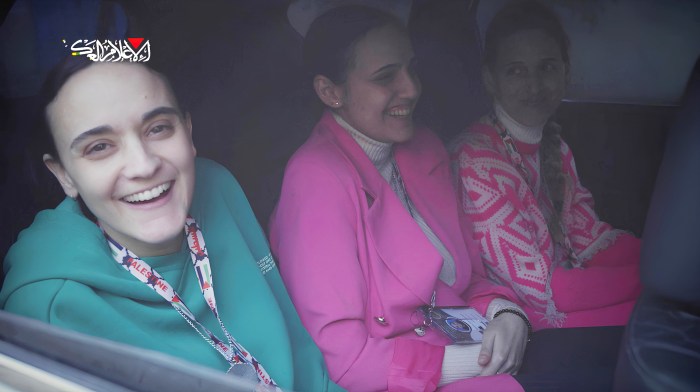By Amanda Kludt
Vladeck Houses, a 24-building public housing development on the Lower East Side, has 518 vacant apartments — the most vacancies of any development in the city — even as there are 136,944 people on the waiting list for New York City public housing. The issue of vacancies in public housing was made public by a recent report by Assemblymember Scott Stringer. He criticized the New York City Housing Authority for delayed construction projects among other failings that have led to 4,831 vacancies citywide. NYCHA has said the vacancies are a necessary part of major renovations.
The Vladeck Houses vacancies, accounting for one-third of all Manhattan vacancies, are a result of a $50 million renovation project. The renovation has included a combined seven years of construction on the roofs and elevators of the 24 six-story buildings and maintenance projects on several of the easternmost buildings. Residents have said the construction has left the majority of the apartments on the sixth floor of every building vacant for the last one to seven years.
When asked about the vacancies, many tenants of the Vladeck Houses were aware of them but not sure why the apartments were left empty. A worker, who would only give his first name, Mimi, said Vladeck is the best place to find vacant apartments. “Every one here, empty,” he said pointing to empty windows in all the buildings around him on a path within the development.
Lydia Perres, a former resident, also pointed to different buildings around her saying, “Look, look, third floor, sixth floor. Mucho apartments no people live here.”
Howard Marder, a NYCHA spokesperson, said, “Yes, there are vacancies, but there are good reasons for them.” Marder explained that of Vladeck’s 518 vacancies, 77 were turnover apartments, 90 were “hospitality apartments,” units specifically set aside to accommodate residents who are relocated due to construction, and the rest are a result of the major roof and elevator work. He said the vacancies due to turnover will always exist and the hospitality apartments will be permanently filled when construction ends.
Ed Garcia, former Vladeck Tenants’ Association president, said the work began in 1997, when NYCHA agreed to repair all of the roofs of Vladeck because of mold, leakage and general disrepair. According to Garcia, Vladeck, built in 1940, was in need of renovation. They fixed the roof in three phases, and as construction began on each consecutive phase, residents were moved off of the sixth floor.
However, NYCHA did not move tenants back into the sixth-floor apartments as each phase was completed because of pending elevator construction. For reasons unknown, the elevators, also built in 1940, did not go all the way to the sixth floor. In 2002, in the midst of the roof renovation, NYCHA decided to amend this problem. George Ziugdza of Nouveau Elevators, the contractor chosen for the work, confirmed that the apartments were empty when they began work. “To my knowledge the sixth-floor tenants were vacated before we got there,” said Ziugdza.
Sixth-floor tenants cannot live in the apartments during the elevator renovation because it involves opening up the roof. Yet, instead of starting work in the phase-one buildings to get the tenants in as soon as possible, the elevator work began on the phase-two buildings. Marder of NYCHA said that even if they did the work in corresponding sections, there would still have to be vacancies in other buildings to move around tenants. “Everything’s coordinated, and it may not look like it’s coordinated, but believe me it is,” he said.
Now, seven years after the commencement of the roof construction and three years after the beginning of the elevator construction, most of the apartments are still empty. Ten of the 56 elevators are finished and residents have been moving in as the work has been completed.
A resident working as a painter at the Vladeck Houses said, “Slowly but surely, they are moving in.” The resident, who would not give his name, fearing “pressure” from management added, “By the end of the year, we’ll be running at full capacity.” However, considering that one-fifth of the elevators have been finished in three years, it may take longer than that. Garcia said he doesn’t expect all of the work to be finished until 2007 or 2008, meaning a number of the apartments will have been vacant for up to 10 years.
One factor slowing down the process is the construction’s winter break from November to April. Marder said that due to recent bad winters, it has been impossible to continue work in those months. “Can you imagine having the roof open with 40 inches of snow? It would ruin the building,” he said. Ziugdza said that since it is “such a unique” project, it is hard to know when the work will be finished and whether or not it is taking longer than it should.
While these assertions may be sound, Assemblymember Scott Stringer still laments the money lost in rent revenue and the struggles of the 137,000 people waiting for those empty apartments. His report states that the public should be able to know the projected start and end dates of all of NYCHA’s major renovation projects and their plans for the relocation of tenants prior to the beginning of the project.
“It took 15 months to build the Empire State Building. It shouldn’t take 13 years to renovate a one-bedroom apartment,” said Stringer, who is a candidate for Manhattan borough president. Stringer said that while he understands tenants have to be relocated for construction, he doesn’t understand why the projects are taking so long. “Is it money, is it bureaucratic bumbling and incompetence?” he wondered, saying that if NYCHA were more transparent with its renovation projects, the public would have a better understanding of what is causing the delays.
In response to Stringer’s accusations, Marder said the assemblymember doesn’t understand the authority’s need to modernize or how to look at the data. “He’s just looked at the raw data,” said Marder. “He’s not looking at routine turnover.” Marder also stressed that the 4,831 vacancies are a small number in comparison to the 181,000 apartments NYCHA operates. “We’ve been in business for 70 years and we plan to be in business for at least another 70 years,” he said. Marder stressed that the priority is to keep the buildings safe. “To do that you have to do the work.”
Regardless of the debate, the apartments in Vladeck Houses currently remain vacant. While Stringer, Vladeck residents and applicants on the waiting list wonder when the seven years, and counting, construction will end, authorities say they’ll just have to wait.
































